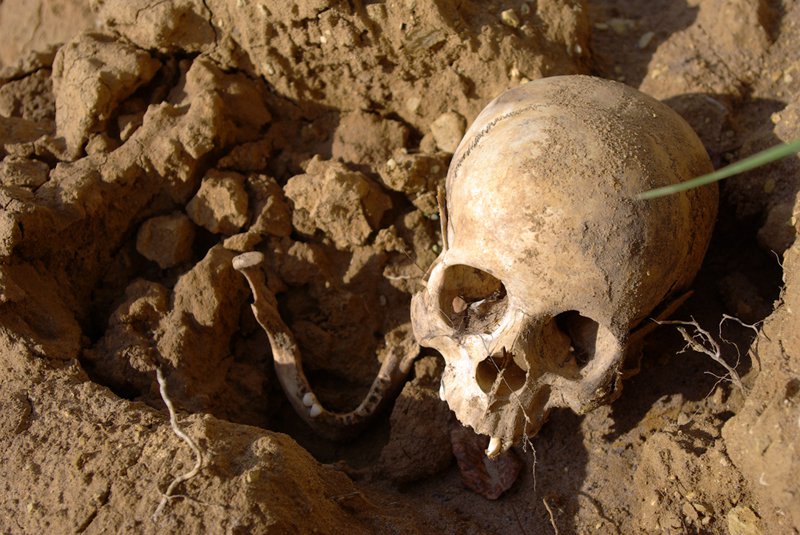Mystery of the sitting ‘mummies’: 1,000-year-old skeletons from a pre-Incan civilisation were buried looking out to sea
Four skeletal remains were discovered in separate tombs in Lima, Peru
The adult man and three women belonged to the ancient Ichma culture
They were buried wrapped in cloth in a seated position looking out to sea
The Ichma dominated the area from 1,000AD before the rise of the Inca
The remains of four bodies dating back to 1,000AD have been discovered in a strange sitting position in a series of tombs.
Archaeologists discovered the skeletons of three adult women and one man in the middle of a residential neighbourhood in Lima, Peru.

They are part of a civilisation that dominated Peru before the rise of the Inca, and while the remains appear to have decomposed, archaeologists believe they were once wrapped in textiles in an attempt to mummify them.

The skeletal remains of four pre-Incan ‘mummies’ (pictured) who were part of a civilisation that lived up to 1,000 years ago in Peru have been unearthed at an ancient ceremonial site in Lima, Peru. Archaeologists said the bodies appear to have been wrapped in textiles and buried in a seated position looking out to sea
The four skeletons, who were found in separate tombs, were part of the ancient Ichma culture that formed following the break-up of the South American Wari Empire before later being absorbed into the Inca Empire.
The figures, some of which still have hair, were found seated, looking out towards the sea, alongside offerings such as ceramics and weaving tools.
The exact reason for this position is still unclear, but archaeologists believe it must have had some ritual significance.

The Incas, and likely cultures before them including the Ichma, believed there was a link between the living and the gods.
As a result, mummies would be ‘consulted’ on important occasions and were often given ‘places of honour’ near temples and on high ground.
The living used artificial techniques such as embalming and drying out the flesh, known as desiccation, to preserve their ᴅᴇᴀᴅ.
Spanish conquerors during the 16th century were reportedly so disgusted by the ritual that they destroyed many mummies after looting their graves.

This may explain the lack of other artefacts, and even the cloth the mummies were wrapped in, in the newly-discovered tombs.
It is the latest in a number of ancient tombs to be discovered in Peru’s capital, but these are among the first from the Ichma, or Ychsma era, helping to provide new clues about this little known, early culture.
Isabel Flores, an archaeologist and director of the excavation at Huaca Pucllana, the ancient ceremonial complex in the Miraflores district of Lima where the skeletons were found, said: ‘There are four human burial sites, for adult individuals, three women and one man, who lived between the years 1000 to 1450.
Some of the skeletons still have hair and were found buried along with ceramic pots and weaving tools (pictured). While the remains appear to have decomposed, archaeologists believe they were once wrapped in cloth in an attempt to mummify them
In particular, archaeologists believe the bodies had been wrapped in hand-woven natural materials before being placed in a seated position in the tombs looking out to sea (illustrated). Mummification was an ancient Andean way to worship ancestors
Related Post
A shocking documentary proves that mermaids do exist
SHOCKING Revelation: Thuya, Mother of Queen Tiye, Was the Grandmother of Akhenaten and Tutankhamun—What Ancient Egyptian Secrets Did She Leave Behind?
Breaking News: Astonishing Discoveries at Karahan Tepe Confirm an Extraterrestrial Civilization is Hiding on Earth, and NO ONE Knows!
Breaking News: Researchers FINALLY Discover U.S. Navy Flight 19 After 75 Years Lost in the Bermuda Triangle!
NASA’s Secret Investigation: Uncovering the Astonishing Mystery of the UFO Crash on the Mountain!
Explosive UFO Docs LEAKED: Startling Proof That Aliens Ruled Ancient Egypt!